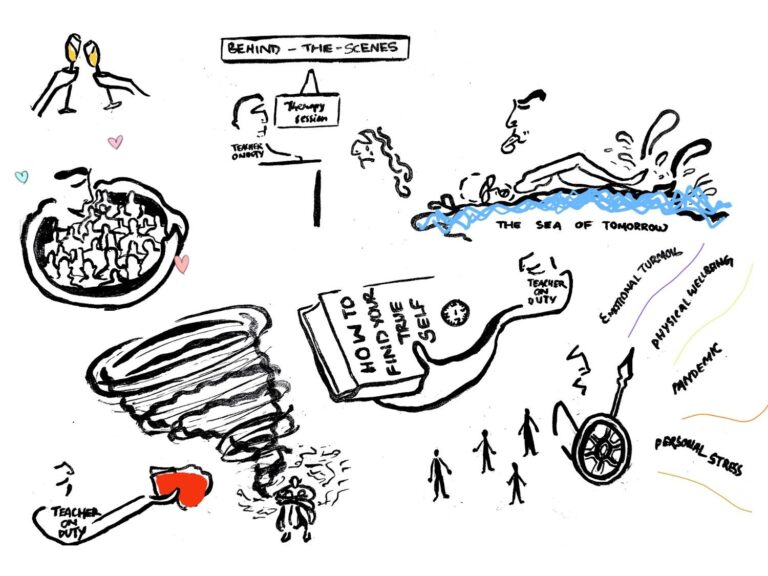Office environment and employee morale
“90% of employees admitted that their attitude about work is adversely affected by the quality of their workplace environment.”
– WELL building standard
Employee well-being is strongly correlated to employee productivity and performance, and workplace ambience plays a significant role in motivating them.
An employee sits at his office desk from 9 to 5 for most days of the week. They spend more than 9 hours a day inside the office premise. They sit there for hours, combining creativity and intelligence to produce results for their employers. They need a workplace environment that is conducive in order to create something unique and add value to the production. Hence, the ambience of the physical workplaces, be it government or corporate, plays a significant role in an employee’s life.
Let us explore further the effects of different workplace ambience on the productivity of the employees.
Toxic Office Environment
Have you ever worked in an office environment where the rooms are filled with toxic fumes of tobacco? Does it appeal to you as a perfect environment for creative thinking? Well, to some maybe yes, to others it might not be.
Some people like to smoke while working. They say it boosts their creative mind. Others smoke to ward off boredom. Many of them are chain smokers. They pop cigarettes one after another without bothering about the fellow employees who might be allergic to tobacco. Employers who are smokers themselves often allow his/her employees to smoke inside the room to make them feel comfortable. All they want are happy employees who can deliver their tasks in such a condition. But this is partiality.
They forget about those other employees who are non-smokers and are highly allergic to tobacco. Sitting inside an office room, day after day, filled with toxic fumes, can lead to an adverse effect on his or her health. Often these rooms are insulated for air-conditioning and windows are not allowed to be opened, resulting tobacco smoke to accumulate inside. This makes it unbearable for the non-smokers. They can neither sit inside comfortably nor concentrate on their work while gasping for breath all the time.
Although smoking inside is not allowed in modern offices, those who run privately owned offices at their own residences never bother to follow these safety protocols. Smoking inside the office rooms should be strictly prohibited. After all, passive smoking is injurious to health.
Claustrophobic Office Environment
It is often seen that office space is divided into a two-storey one by using a false ceiling and floor to make way for more employees. Employers of such companies surely love saving money! Though they make crores of rupees by the end of the day, spending money after employee safety and comfort is a trivial matter to them.
Windows are forcefully closed to make way for air conditioning machines. This reduces the air circulation inside the room, leading to an uncomfortable smelly atmosphere.
The low height of the ceiling, with very little space to move about or spread legs to make yourself comfortable, unclean desks, and floors filled with old dusty carpets, bugs, and insects around are surely not an appealing sight to any employee who has a taste for sophistication and cleanliness.
Offices having a false floor with no fire exit and narrow winding stairs to go up and down are not safe for employees. Accidents such as fire breaks outs or earthquakes can cause a major disaster and loss of lives if such a structure collapses.
People with claustrophobia don’t like such ambience to work in. This makes them unhappy, unproductive, and panicky. Disengaged employees are unlikely to make positive contributions, and their negativity tends to spread at an alarming rate.
Congested Sitting Arrangements in Office
Instead of designing a more human-centred workplace, employers build office suites in a congested manner with as many sitting arrangements they could accommodate. It is because when they build their offices, they are focused on the number of employees they are going to hire and the profit they are looking to make, and not employee well-being or their comfort.
We all know sitting at the office desk and in front of a computer for long hours can lead to computer-induced health problems. Health issues like spondylosis, severe back pain, neck pain, computer vision syndrome, carpal tunnel syndrome, etc. are widespread among IT workers and graphic designers. All these can be related to poor sitting arrangements or posture at workplaces.
How many of you have experienced proper sitting arrangements that comfort you while working at the office? Employers often forget that neglecting the principles of ergonomics during computer utility raises the risk of health problems among users.
For example, in open offices, desks are divided into small cubicles with hardly 2 feet space for each employee to sit. An employee with heavy stature might not even be able to turn his chair while getting up from his seat! One might not be able to move the mouse properly on the desk due to a shortage of space.
Offering broken or wobbly revolving chairs to employees for sitting is another commonplace thing in offices. Imagine the situation where you are sitting on an unsteady chair, trying to concentrate on a difficult designing project, while your body is continuously vacillating all day long. Does it seem appealing to you to work in such a condition?
Use of bad colours and lighting condition inside the office
A small designing house on the mezzanine floor of a building used bright red colour to paint its walls and offered red cushioned chairs and red-coloured felt-topped tables for each and every employee. The office was also brightly lit. The reason was simple…red was the company’s brand colour. And the employer had a fascination for red coloured objects. But the employer missed out on one very important thing. He did not understand the psychological effects of different colours on the minds of his employees.
Red is a very powerful colour. Being a physical colour, it can stimulate the pulse and can raise blood pressure. So, red can be used for areas where physical jobs like construction activities are done. It is not very ideal for a creative office environment. To some people, bright colours inside the office can become a distracting element.
On the other hand dull grey walls with cracks, use of pale colours on walls, dusty old furniture and dark corners might not be motivating to many. For example, grey often represents neutrality, but, if it is used inappropriately with dim light, it suggests a lack of confidence and can stimulate a depressing mood.
The use of colours, forms, and visuals evoke emotions in humans. A balanced emotional quotient is a must in the office culture today, where employees are pressed for time. Many employers now prefer visually and thoughtfully-designed workspaces that can boost to evoke empathy in the competitive employees of today.
In conclusion, to bring an attitudinal shift in the way people work, an employer must pay heed to these aspects of office ambience. Employees who enjoy and like the environments they are a part of, will be more engaged, productive, happy, and healthy.








